- گزارش کار آزمایشگاه شیمی
- گزارش کار آزمایشگاه شیمی عمومی 1
- گزارش کار آزمایشگاه شیمی عمومی 2
- گزارش کار آزمایشگاه شیمی آلی 1
- گزارش کار آزمایشگاه شیمی آلی 2
- گزارش کار آزمایشگاه شیمی معدنی 1
- گزارش کار آزمایشگاه شیمی معدنی 2
- گزارش کار آزمایشگاه شیمی فیزیک 1
- گزارش کار آزمایشگاه شیمی فیزیک 2
- گزارش کار آزمایشگاه شیمی تجزیه 2
- تجزیه دستگاهی (آنالیز دستگاهی)
- گزارش کار آزمایشگاه شیمی پلیمر
- گزارش کار آزمایشگاه تصفیه آب
- گزارش کار آزمایشگاه زیست شناسی
- گزارش کار آزمایشگاه بیوشیمی
- گزارش کار آزمایشگاه عملیات واحد
- گزارش کار آزمایشگاه ترمودینامیک
- گزارش کار آزمایشگاه فیزیک
- گزارش کار آزمایشگاه مبانی مهندسی برق
- گزارش کار آزمایشگاه مقاومت مصالح
کتاب Basic One- and Two-Dimensional NMR Spectroscopy انگلیسی
- دسته بندی: شیمی
- حجم فایل: 55Mb
- نوع فایل: pdf
- صفحات: 435
- مقطع تحصیلی: کارشناسی ارشد
دانلود pdf کتاب Basic One- and Two-Dimensional NMR Spectroscopy – Horst Friebolin
زبان: انگلیسی
نسخه: ویرایش چهارم
نوع فایل : pdf – قابل جستجو
تعداد صفحات: 435 صفحه
تعداد فصل ها: 14 فصل
نحوه دانلود: پس از خرید به نسخه اصلی کتاب با فرمت PDF دسترسی خواهید داشت.
برای دانلود ترجمه فارسی این کتاب اینجا کلیک کنید.
دانلود پیش نمایش صفحات ابتدایی کتاب
Fourth, Completely Revised and Updated Edition
Translated by: Jack K. Becconsall
Prof. Dr. Horst Friebolin
Organisch-Chemisches Institut der Universitat
Im Neuenheimer Feld 270
69120 Heidelberg
Germany
All books published by Wiley-VCH are carefully produced. Nevertheless, authors, editors , and publisher do not warrant the information contained in these books , including this book, to be free of e rrors . Readers are advised to keep in mind that stateme nts, data, illustrations, procedural detail s or other items may inadvertently be inaccurate.
Foreword
Over the past decade, many, if not most, graduate students and postdoctoral fellows in organic chemistry seem to have come to regard nuclear magnetic resonance spectroscopy as a “black box” . Something in which you insert an unknown and out comes the data to establish structural formula. Perhaps this trend in the way NMR is perceived is really not surprising, because how manufacturers have tried to package their instruments to be ” user friendly” and because of the enormous growth in the sophistication of what NMR instrumentation can do.
Those of us who were fortunate to be in on the beginning of the applications of NMR to organic chemistry in the mid- 1950’s were able to more or less “grow” with the field and come into the modern arena of multipulse and multidimensional NMR with substantial experience with NMR fundamentals. Those who now wish to start using NMR in their research surely must feel, at least somewhat, overwhelmed by the enormity and sophistication of the currently available knowledge of NMR and must have further concerns at being told by the specialists, that fantastic further, even more sophisticated , developments are in the offing. A “black box” that would function with no need to worry about its inner workings must then be an attractive proposition. The problem is that to properly use modern NMR requires a lot of rather specialized knowledge. The effects of couplings , of exchange, of relaxation times, of low sensitivity, of solvent and so on, make selection of instrumental parameters for taking spectra far from routine. Serious errors or inefficient use of very expensive instrumentation come with ease.
The best way to learn NMR spectroscopy is by doing it , but textbooks, guidebooks anet:J:eference books are vitally necessary. Having written two b oks about NMR basics, with a third in progress , I know mething about the difficulties of making available “what e ery NMR user should know” . And it is to this objective th Professor Friebolin has made a wonderfully broad coRtfi ution. This book will be of interest and help to both those needing to learn and those needing a reference book to refresh their memories, or extend their capabilities in NMR spectroscopy. It is not a book intended to replace the treatises of Abragam or Bodenhausen, Ernst and Wokaun.
However, even though it does start at a useful elementary level , it goes rather deeply into the difficult basics of multipulse and multidimensional spectroscopy. The result is material that almost every reader will find of value.
The beginner can start with the elements of chemical shifts and couplings and later proceed to more difficult matters. The expert can find ways of explaining what he is doing , without necessarily resorting to density matrices; or else , in impatience with an eager, but dull , learner, can say “Go read about it in Friebolin , then we can talk” .
Much is covered in this book in meaningful detail. There is a plethora of structural parameters for proton and carbon NMR and many examples of how they can be used . Best of all , though , are very clear, meticulously written descriptions of INEPT, DEPT, INADEQUATE, COSY, NOESY, and the like , in one- and two-dimensional NMR spectroscopy. Experts may prefer mathematical equations for compactness and “it is easy to see”. I prefer descriptions such as those used by Professor Friebolin , which will indeed require careful reading , rereading and drawing and redrawing ones own vector diagrams, but can lead to a real level of understanding. Such understanding in its turn can only result in improved ability to take and interpret NMR spectra.
1-The Physical Basis of NMR Spectroscopy
- 1-1 Introduction
In 1946 two research groups, that of F. Bloch, W.W. Hansen and M. E. Packard and that of E. M. Purcell, H. C. Torrey and R.V. Pound, independently observed nuclear magnetic reso nance signals for the first time. Bloch and Purcell were jointly awarded the Nobel Prize for Physics in 1952 for their discovery. Since then nuclear magnetic resonance (NMR) spectroscopy has developed into an indispensable tool for chemists, bio chemists, physicists, and more recently medical scientists.
During the first three decades of NMR spectroscopy all measure ments relied on one-dimensional modes of observation; this gives spectra having just one frequency axis, the second axis being used to display the signal intensities. The development of two-dimensional NMR experiments during the 1970s heralded the start of a new era in NMR spectroscopy. Spectra recorded by these methods have two frequency axes, the intensities being displayed in the third dimension. More recently it has even become possible to perform experiments with three or more dimensions, although these are still far from being routine techniques.
The importance of the position that NMR spec troscopy now occupies is illustrated by the awards of the Nobel Prize for Chemistry in 1991 to R.R. Ernst and in 2002 to K. Wi.ithrich, and of the Nobel Prize for Medicine in 2003 to P. Lauterbur and P. Mansfield for their pioneering research on NMR methods in chemistry, biochemistry and medicine. The new techniques that have emerged during the last few years show that developments in NMR spectroscopy are still far from coming to an end.
This book aims to explain why it is that, for chemists espe cially, NMR spectroscopy has become {possibly) the most important of aJJ spectroscopic methods.
The main field of application of NMR spectroscopy is that of determining the structures of molecules. The necessary infor mation for this is obtained by measuring, analyzing and inter preting high-resolution NMR spectra recorded on liquids of low viscosity (or in some cases on solids by using special tech niques and instruments that have been developed in the last few years). In this book we will confine our attention almost exclusively to high-resolution NMR spectroscopy on liquids, since solid-state measurements involve quite different experimental techniques and the interpretation often brings in extra compli cations.
The nuclides that mainly interest us are protons (1H) and car bon-13 (‘3C), as their resonances are the most important ones for determining the structures of organic molecules. However, in the following chapters we shall meet also examples of NMR spectroscopy of other nuclides whose NMR signals can now be observed without difficulty.
In order to understand NMR spectroscopy we first need to learn how nuclei which have a nuclear angular momentum P and a magnetic momentµ behave in a static magnetic field. Following this we shall discuss the basic NMR experiment, the different methods of observation, and the spectra] parameters.
Contents
|
1 |
The Physical Basis of NMR Spectroscopy |
1 |
|
1.1 |
ntroduction |
1 |
|
1.2 |
Nuclear Angular Momentum and Magnetic Moment |
2 |
|
1.3 |
Nuclei in a Static Magnetic Field |
4 |
|
1.3.1 |
Directional Quantization |
4 |
|
1.3.2 |
Energy of the Nuclei in the Magnetic Field |
4 |
|
1.3.3 |
Populations of the Energy Levels |
6 |
|
1.3.4 |
Macroscopic Magnetization ………….. . |
6 |
|
1.4 |
Basic Principles of the NMR Experiment …. . |
7 |
|
1.4.1 |
ThReesonance Condition …………… . |
7 |
|
1.4.2 |
Basic Principle of the NMR Measurement … . |
8 |
|
1.5 |
The Pulsed NMR Method …………… . |
9 |
|
1.5.l |
The Pulse ………………………. . |
9 |
|
1.5.2 |
The Pulse Angle ………………….. . |
10 |
|
1.5.3 |
Relaxation ……………………… . |
13 |
|
1.5.4 |
The Time and Frequency Domains: the Fourier Transformation |
14 |
|
1.5.5 |
Spectrum Accumulation …………….. . |
16 |
|
1.5.6 |
The Pulsed NM R Spectrometer ………… |
18 |
|
1.6 |
Spectral Parameters: a Brief Survey .……. . |
22 |
|
1.6.l |
The Chemical Shift. ……………….. . |
22 |
|
1.6.1.1 |
Nuclear Shielding …………………. . |
22 |
|
1.6.1.2 |
Reference Compounds and the a-Scale …… . |
24 |
|
1.6.2 |
Spin-Spin Coupling………………… . |
26 |
|
1.6.2.1 |
The Indirect Spin-Spin Coupling ………… |
26 |
|
1.6.2.2 |
Coupling to One Neighboring Nucleus (AX Spin System) |
27 |
|
1.6.2.3 |
Coupling to Two Equivalent Neighboring Nuclei (AX2 Spin System) |
29 |
|
1.6.2.4 |
Coupling to Three or More Equivalent Neighboring Nuclei (AXn Spin System) |
30 |
|
1.6.2.5 |
Multiplicity Rules …………………. . |
30 |
|
l.6.2.6 |
Couplings between Three Non-equivalent Nuclei (AMX Spin System) |
31 |
|
1.6.2.7 |
Couplings between Equivalent Nuclei (A., Spin Systems) |
32 |
|
1.6.2.8 |
The Order of a Spectrum …………….. |
33 |
|
1.6.2.9 |
Couplings between Protons and other Nuclei: 13C Satellite Spectra |
33 |
|
1.6.3 |
The Intensities of the Resonance Signals |
34 |
|
1.6.3.l |
1H Signal Intensities |
34 |
|
1.6.3.2 |
1·1cs1·gna1·1ntens1.t.1es |
35 |
|
1.6.4 |
Summary |
37 |
|
1.7 |
“Other” Nuclides |
38 |
|
1.7.I |
Nuclides with Spin/= 1/2 |
39 |
|
1.7.2 |
Nuclides with Spin 1 > 112 |
40 |
|
1.8 |
Bibliography for Chapter 1 |
41 |
|
2 |
The Chemical Shift |
43 |
|
2.1 |
ntroduction |
43 |
|
2. 1.l |
Influence of the Charge Density on the Shielding |
44 |
|
2.12 |
Effects of Neighboring Groups |
47 |
|
2.1.2.1 |
Magnetic Anisotropy of Neighboring Groups |
47 |
|
2. 1.2 .2 |
Ring Current Effects |
49 |
|
2. 1.2 .3 |
Electric Field Effects |
51 |
|
2. 1.2.4 |
Intermolecular Inte ractions – Hydrogen Bonding and Solvent Effects |
51 |
|
2.1.2.5 |
Isotope Effects |
51 |
|
2..1.3 |
Summary |
52 |
|
2.2 |
1 H Chemical Shifts of Organic Compounds |
53 |
|
2.2.1 |
Alkanes and Cycloalkanes |
54 |
|
2.2.2 |
Alkenes |
56 |
|
2.2.3 |
Arenes |
56 |
|
2.2.4 |
Alkynes |
57 |
|
2.2.5 |
Aldehydes |
58 |
|
2.2.6 |
OH, SH , NH |
59 |
|
2.3 |
13C Chemical Shifts of Organic Compounds |
60 |
|
2.3.l |
Alka nes and Cycloalkanes |
61 |
|
2.3.2 |
Alkenes |
63 |
|
2.3.3 |
Arenes |
64 |
|
2.3.4 |
Alkynes |
66 |
|
2.3.5 |
Allenes |
66 |
|
2.3.6 |
Carbonyl and Carboxy Compounds |
66 |
|
2.3.6.1 |
Aldehydes and Ketones |
67 |
|
2.3.6.2 |
Carboxylic Acids and Derivati ves |
68 |
|
2.4 |
Relationships between the Spectrum and the Molecular Structure |
70 |
|
2.4. 1 |
Equivalence, Symmetry a nd Chi ra li ty |
70 |
|
2.4 .2 |
Homotopic, Enantiotopic and Diaste reotopic Groups |
74 |
|
2.4.3 |
Summary |
77 |
|
2.5 |
Chemical Shifts of “Other” Nuclides |
78 |
|
2.6 |
Bibliography for Chapter 2 |
83 |
|
3 |
Indirect Spin-Spin Coupling |
85 |
|
3.1 |
Introduction |
85 |
|
3.2 |
H,H Coupling Constants and Chemical Structure |
87 |
|
3.2. l |
Geminal Couplings 2./ (H,H) |
87 |
|
3.2.1.1 |
Dependence on Bond Angle |
87 |
|
3.2. l.2 |
Substituent Effects |
88 |
|
3.2.l.3 |
Effects of Neighboring iT-Electrons |
88 |
|
3.2.2 |
Yicinal Couplings 3./(H,H) |
89 |
|
3.2.2.1 |
Dependence on the Dihedral Angle |
90 |
|
3.2.2.2 |
Substituent Effects |
93 |
|
3.2.3 |
H,H Couplings in Aromatic Compounds |
95 |
|
3.2.4 |
Long-range Couplings |
96 |
|
3.3 |
C,H Coupling Constants and Chemical Structure |
97 |
|
3.3.1 |
C,H Couplings through One Bond 1J(C,H) |
97 |
|
3.3.l.l |
Dependence on the s-Fraction |
97 |
|
3.3.1.2 |
Substituent Effects |
97 |
|
3.3.2 |
C,H Couplings through Two or More Bonds |
98 |
|
3.3.2.I |
Geminal Couplings (i.e. 21 (C,H) in H-C- 13C) |
98 |
|
3.3.2.2 |
Yicinal Couplings (i.e. 3J(C,H) in H-C-C-13C) |
99 |
|
3.3.2.3 |
Long-range Couplings 3+ 11J(C.H) |
99 |
|
3.3.3 |
C,H Couplings in Benzene Derivatives |
99 |
|
3.4 |
C,C Coupling Constants and Chemical Structure |
100 |
|
3.5 |
Correlations between C,H and H,H Coupling Constants |
101 |
|
3.6 |
Coupling Mechanisms |
102 |
|
3.6.1 |
The Electron-Nuclear Interaction |
102 |
|
3.6.2 |
H,D Couplings |
104 |
|
3.6.3 |
Relationship between the Coupling and the Lifetime of a Spin State |
105 |
|
3.6.4 |
Couplings through Space …………….. |
106 |
|
3.7 |
Couplings of “Other” Nuclides (Heteronuclear Couplings) |
106 |
|
3.8 |
Bibliography for Chapter 3 |
109 |
|
4 |
Spectrum Analysis and Calculations |
111 |
|
4.1 |
Introduction |
111 |
|
4.2 |
Nomenclature |
113 |
|
4.2.l |
Systematic Notation for Spin Systems |
113 |
|
4.2.2 |
Chemical and Magnetic Equivalence |
114 |
|
4.3 |
Two-Spin Systems |
116 |
|
4.3.1 |
The AX Spin System |
116 |
|
4.3.2 |
The AB Spin System |
118 |
|
4.4 |
Three-Spin Systems |
120 |
|
4.4.1 |
The AX2, AK2, AB2 and A3 Spin Systems |
120 |
|
4.4.2 |
The AMX and ABX Spin Systems |
121 |
|
4.5 |
Four-Spin Systems |
123 |
|
4.5.1 |
A2X2 and A2B2 Spin Systems |
123 |
|
4.5.2 |
The AA’XX’ and AA’BB’ Spin Systems |
124 |
|
4.6 |
Spectrum Simulation and Iteration |
125 |
|
4.7 |
Analysis of 13C NMR Spectra |
126 |
|
4.8 |
Bibliography for Chapter 4 .………….. . |
127 |
|
5 |
Double Resonance Experiments ……. . |
129 |
|
5.1 |
Introduction ……………………… |
129 |
|
5.2 |
Spin Decoupling in 1H NMR Spectroscopy ... .
|
130 |
|
5.2.l |
Simplification of Spectra by Selective Spin Decoupling ………….. |
130 |
|
5.2.2 |
Suppression of a Solvent Signal ………… |
132 |
|
5.3 |
Spin Decoupling in 13C NMR Spectroscopy .. . |
133 |
|
5.3.1 |
1H Broad-band Decoupling …………… |
133 |
|
5.3.2 |
The Gated Decoupling Experiment ……… |
135 |
|
5.3.3 |
1H Off-Resonance Decoupling ………… . |
136 |
|
5.3.4 |
Selective Decoupling in 13C NMR Spectroscopy |
137 |
|
5.4 |
Bibliograph)1 for Chapter 5 .………….. . |
138 |
|
6 |
Assignment of 1H and 13C Signals ……. |
139 |
|
6.1 |
Introduction …………………….. . |
139 |
|
6.2 |
1H NMR Spectroscopy ……………… . |
140 |
|
6.2.1 |
Defining the Problem ………………. . |
140 |
|
6.2.2 |
Empirical Correlations for Predicting Chemical Shifts |
141 |
|
6.2.2.1 |
Alkanes (Shoolery’s Rule) …………… . |
141 |
|
6.2.2.2 |
Alkenes ……………………….. . |
142 |
|
6.2.2.3 |
Benzene Derivatives……………….. . |
143 |
|
6.2.3 |
Decoupling Experiments …………….. |
145 |
|
6.2.4 |
Effects of Solvent and Temperature …….. . |
145 |
|
6.2.5 |
Altering the Chemical Structure of the Sample |
146 |
|
6.3 |
13C NMR Spectroscopy • |
147 |
|
6.3.1 |
Defining the Problem ………………. . |
147 |
|
6.3.2 |
Empirical Correlations for Predicting Approximate Chemical Shifts |
148 |
|
6.3.2.l |
Alkanes ……………………….. . |
148 |
|
6.3.2.2 |
Alkenes ……………………….. . |
151 |
|
6.3.2.3 |
Benzene Derivatives………………… |
153 |
|
6.3.3 |
Decoupling Experiments ……………. . |
154 |
|
6.3.4 |
T1 Measurements …………………. . |
154 |
|
6.3.5 |
Solvent and Temperature Effects and Shift Reagents |
154 |
|
6.3.6 |
Chemical Changes to the Sample ………. . |
154 |
|
6.4 |
Computer-aided Assignment of 13C NMR Spectra |
156 |
|
6.4.1 |
Searching for Identical or Related Compounds |
156 |
|
6.4.2 |
Spectrum Prediction . . . . . . . . . . . . . . . . . . . . . |
151 |
|
6.5 |
Bibliography for Chapter 6. . . . . . . . . . . . . . . . |
159 |
|
7 |
Relaxation . . . . . . . . . . . . . . . . . . . . . . . . . . . |
16l |
|
7.1 |
Introduction . . . . . . . . . . . . . . . . . . . . . . . . . . . |
I6 l |
|
7.2 |
Spin-Lattice Relaxation of 13C Nuclei (T1). |
162 |
|
7.2.1 |
Relaxation Mechanisms . . . . . . . . . . . . . . . . . . |
162 |
|
7.2.2 |
Experimental Determination of T1; the Inversion Recovery Experiment |
164 |
|
7.2.3 |
Relationships between T, and Chemical Structure |
168 |
|
7.2.3.1 |
Influence of Protons in CH, CH2 and CH3 Groups |
168 |
|
7.2.3.2 |
Influence of Molecular Size . . . . . . . . . . . . . . . |
169 |
|
7.2.3.3 |
Segmental Mobilities . . . . . . . . . . . . . . . . . . . . |
170 |
|
7.2.3.4 |
Anisotropy of the Molecular Mobility. . . . . . . . |
170 |
|
7.2.4 |
Suppression of the Water Signal . . . . . . . . . . . . |
171 |
|
7.3 |
Spin-Spin Relaxation (T2) . . . . . . . . . . . . . . . . |
171 |
|
7.3.1 |
Relaxation Mechanisms . . . . . . . . . . . . . . . . . . |
17 I |
|
7.3.2 |
Experimental Determination of T2; the Spin-Echo Experiment |
173 |
|
7.3.3 |
Line-widths of NMR Signals. . . . . . . . . . . . . . . |
177 |
|
7.4 |
Bibliography for Chapter 7. . . . . . . . . . . . . . . . |
178 |
|
8 |
One-Dimensional NMR Experiments using Complex Pulse Sequences . . . . . . . . |
I 8I |
|
8.1 |
Introduction . . . . . . . . . . . . . . . . . . . . . . . . . . . |
18J |
|
8.2 |
Basic Techniques Using Pulse Sequences and Pulsed Field Gradients |
182 |
|
8.2.1 |
The Effect of the Pulse on the Longitudinal Magnetization (Mz) |
183 |
|
8.2.2 |
The Effect of the Pulse on the Transverse Magnetization Components(Mx•, My•) |
184 |
|
8.2.3 |
The Effect of Pulsed Field Gradients on the Transverse Magnetization |
187 |
|
8.3 |
The ]-Modulated Spin-Echo Experiment . . . . . |
192 |
|
8.4 |
The Pulsed Gradient Spin-Echo Experiment . . |
200 |
|
8.5 |
Signal Enhancement by Polarization Transfer. . |
202 |
|
8.5.l |
The SPI Experiment. . . . . . . . . . . . . . . . . . . . . |
202 |
|
8.5.2 |
The INEPT Experiment. . . . . . . . . . . . . . . . . . |
205 |
|
8.5.3 |
The Reverse INEPT Experiment with Proton Detection |
213 |
|
8.6 |
The DEPT Experiment . . . . . . . . . . . . . . . . . . |
218 |
|
8.7 |
The Selective TOCSY Experiment. . . . . . . . . . |
223 |
|
8.8 |
The One-Dimensional INADEQUATE Experiment |
225 |
|
8.9 |
Bibliography for Chapter 8. . . . . . . . . . . . . . . . |
229 |
|
9 |
Two-Dimensional NMR Spectroscopy . . . |
231 |
|
9.1 |
Introduction. . . . . . . . . . . . . . . . . . . . . . . . . . . |
23 I |
|
9.2 |
The Two-Dimensional NMR Experiment. . . . . |
232 |
|
9.2.1 |
Preparation, Evolution and Mixing, Data Acquisition |
232 |
|
9.2.2 |
Graphical Representation. . . . . . . . . . . . . . . . . |
236 |
|
9.3 |
Two-Dimensional ./-Resolved NMR Spectroscopy |
237 |
|
9.3.1 |
Hctcronuclear Two-Dimensional}-Resolved NMR Spectroscopy |
237 |
|
9.3.2 |
Homonuclear Two-Dimensional}-Resolved NMR Spectroscopy |
241 |
|
9.4 |
Two-Dimensional Correlated NMR Spectroscopy |
246 |
|
9.4.1 |
Two-Dimensional Heteronuclear (C.H)-Correlated NMR Spectroscopy (HETCOR or CH-COSY) |
247 |
|
9.4.2 |
Two-Dimensional Homonuclear (H,H)-Correlated NMR Spectroscopy (H,H-COSY: Long-Range COSY) |
255 |
|
9.4.3 |
Reverse Two-Dimensional Heteronuclear (H,C)-Correlated NMR Spectroscopy (HSQC; HMQC) |
263 |
|
9.4.4 |
The Gradient-Selected (gs-)HMBC Experiment |
268 |
|
9.4.5 |
The TOCSY Experiment…. . . . . . . . . . . . . . |
273 |
|
9.4.6 |
Two-Dimensional Exchange NMR Spectroscopy: The Experiments NOESY ROESY and EXSY |
276 |
|
9.5 |
The Two-Dimensional INADEQUATE Experiment |
281 |
|
9.6 |
Summary of Chapters 8 and 9. . . . . . . . . . . . . . |
286 |
|
9.7 |
Bibliography for Chapter 9. . . . . . . . . . . . . . . . |
287 |
|
10 |
The Nuclear Overhauser Effect . . . . . . . . . |
289 |
|
10.l |
Introduction. . . . . . . . . . . . . . . . . . . . . . . . . . . |
289 |
|
10.2 |
Theoretical Background. . . . . . . . . . . . . . . . . . |
290 |
|
10.2.l |
The Two-Spin System. . . . . . . . . . . . . . . . . . . . |
290 |
|
10.2.2 |
Enhancement Factors. . . . . . . . . . . . . . . . . . . . |
293 |
|
10.2.3 |
Multi-Spin Systems |
294 |
|
10.2.4 |
From the One-Dimensional to the Two-Dimensional Experiments, NOESY and ROESY |
295 |
|
10.3 |
Experimental Aspects . . . . . . . . . . . . . . . . . . . |
296 |
|
10.4 |
Applications. . . . . . . . . . . . . . . . . . . . . . . . . . . |
298 |
|
10.5 |
Bibliography for Chapter 10. . . . . . . . . . . . . . . |
303 |
|
11 |
Dynamic NMR Spectroscopy (DNMR) .. |
30S |
|
11.1 |
Introduction …………………….. . |
305 |
|
11.2 |
Quantitative Calculations ……………. . |
309 |
|
11.2.1 |
Complete Line-shape Analysis ………… . |
309 |
|
1l.2.2 |
The Coalescence Temperature Tc and the Corresponding Rate Constant kc |
311 |
|
11.2.3 |
Activation Parameters ……………… . |
312 |
|
11.2.3.1 |
The Arrhenius Activation Energy £A ……. . |
312 |
|
11.2.3.2 |
The Free Enthalpy of Activation t::,.G …….. |
313 |
|
11.2.3.3 |
Estimating the Limits of Error …………. |
314 |
|
11.2.4 |
Rate Constants in Reactions with Intermediate Stages |
315 |
|
11.2.5 |
Intermolecular Exchange Processes . . . . . . . . . |
3 16 |
|
11.3 |
Applications. . . . . . . . . . . . . . . . . . . . . . . . . . . |
3 17 |
|
ll.3.1 |
Rotation about CC Single Bonds . . . . . . . . . . . |
317 |
|
11.3.1.1 |
C(sp3)-C(sp3) Bonds. . . . . . . . . . . . . . . . . . . . |
318 |
|
ll.3.1.2 |
C(sp2)-C(sp3) Bonds. . . . . . . . . . . . . . . . . . . . |
3 I 8 |
|
11.3.1.3 |
C(sp2)-C(sp2) Bonds. . . . . . . . . . . . . . . . . . . . |
319 |
|
11.3.2 |
Rotation about a Partial Double Bond . . . . . . . |
319 |
|
ll.3.3 |
Inversion at Nitrogen and Phosphorus Atoms. . |
321 |
|
11.3.4 |
Ring Inversion . . . . . . . . . . . . . . . . . . . . . . . . . |
322 |
|
11.3.5 |
Valence Tautomerism. . . . . . . . . . . . . . . . . . . . |
325 |
|
11.3.6 |
Keto-Enol Tautomerisrn. . . . . . . . . . . . . . . . . . |
326 |
|
11.3.7 |
Intermolecular Proton Exchange . . . . . . . . . . . |
327 |
|
ll.3.8 |
Reactions and Equilibration Processes . . . . . . . |
329 |
|
11.4 |
Bibliography for Chapter 11. . . . . . . . . . . . . . . |
332 |
|
12 |
Shift Reagents. . . . . . . . . . . . . . . . . . . . . . . . |
335 |
|
12.1 |
Lanthanide Shift Reagents (LSRs) . . . . . . . . . . |
335 |
|
12.1.1 |
Fundamentals. . . . . . . . . . . . . . . . . . . . . . . . . . |
335 |
|
12.1.2 |
Applications and Quantitative Interpretation . . |
337 |
|
12.2 |
Chiral Lanthanide Shift Reagents. . . . . . . . . . . |
340 |
|
12.3 |
Chiral Solvents. . . . . . . . . . . . . . . . . . . . . . . . . |
342 |
|
U.4 |
Bibliography for Chapter 12. . . . . . . . . . . . . . . |
345 |
|
13 |
Macromolecules . . . . . . . . . . . . . . . . . . . . . . |
347 |
|
13.1 |
Introduction . . . . . . . . . . . . . . . . . . . . . . . . . . . |
347 |
|
13.2 |
Synthetic Polymers. . . . . . . . . . . . . . . . . . . . . . |
348 |
|
13.2.1 |
The Tacticity of Polymers. . . . . . . . . . . . . . . . . |
348 |
|
13.2.2 |
Polymerization of Dienes . . . . . . . . . . . . . . . . . |
35 I |
|
13.2.3 |
Copolymers . . . . . . . . . . . . . . . . . . . . . . . . . . . |
352 |
|
13.2.4 |
Solid-State NMR Spectroscopy of Polymers . . . |
353 |
|
13.3 |
Biopolymers .……………………. . |
355 |
|
13.3.J |
Peptides and Proteins ……………….. |
356 |
|
13.3.1.l |
Sequence Analysis …………………. |
357 |
|
13.3.1.2 |
ThTehree-Dimensional Structure of Proteins .. |
358 |
|
13.3.2 |
Polynucleotides ………………….. . |
360 |
|
13.3.3 |
Oligosaccharides and Polysaccharides……. . |
362 |
|
13.4 |
Bibliography for Chapter 13 .…………. . |
366 |
|
14 |
NMR Spectroscopy in Biochemistry and Medicine |
369 |
|
14.1 |
Introduction |
369 |
|
14.2 |
Elucidating Reaction Pathways in Biochemistry |
370 |
|
14.2.1 |
Syntheses using Singly 13C-Labeled Precursors |
370 |
|
14.2.l.l |
Low Levels of 13C Enrichment …………. |
370 |
|
14.2.1.2 |
High Levels of 13C Enrichment |
372 |
|
14.2.2 |
Syntheses using Doubly 13C-Labeled Precursors |
373 |
|
14.3 |
High-Resolution in vivo NMR Spectroscopy |
375 |
|
14.3.1 |
The Problem and its Solution |
375 |
|
14.3.2 |
3 tp NMR Experiments |
376 |
|
14.3.3 |
1 H and 13C NMR Experiments |
379 |
|
14.4 |
Magnetic Resonance Tomography |
380 |
|
14.4.1 |
Basic Principles and Experimental Considerations |
380 |
|
14.4.2 |
Applications |
386 |
|
14.4.2.1 |
Magnetic Resonance Tomography |
386 |
|
14.4.2.2 |
Magnetic Resonance Spectroscopy, 1H MRS |
390 |
|
14.5 |
Bibliography for Chapter 14 |
392 |
|
|
Subject Index |
395 |
|
|
Index of Compounds |
403 |
آموزش ویدیویی باز کردن فایل های زیپ در گوشی های اندرویدی
محصولات مرتبط
کتاب PDF ترجمه مبانی طیف سنجی رزونانس مغناطیسی هسته یک و دو بعدی هورست فربولین
امتیاز 5 از 5


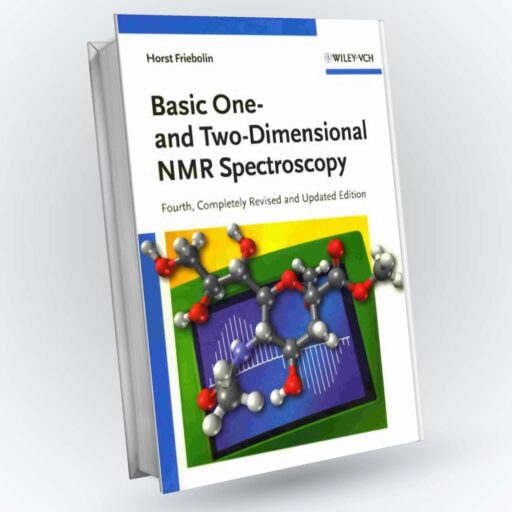

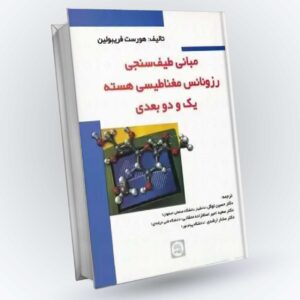
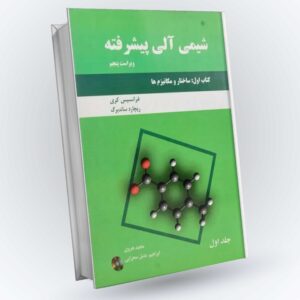
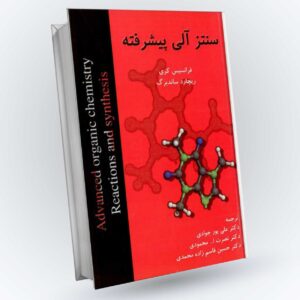



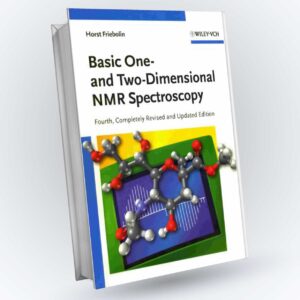
نقد و بررسیها
هنوز بررسیای ثبت نشده است.